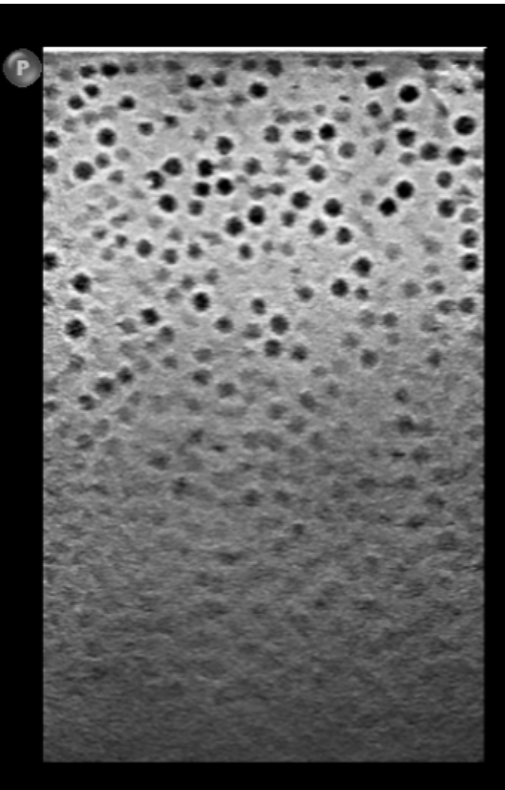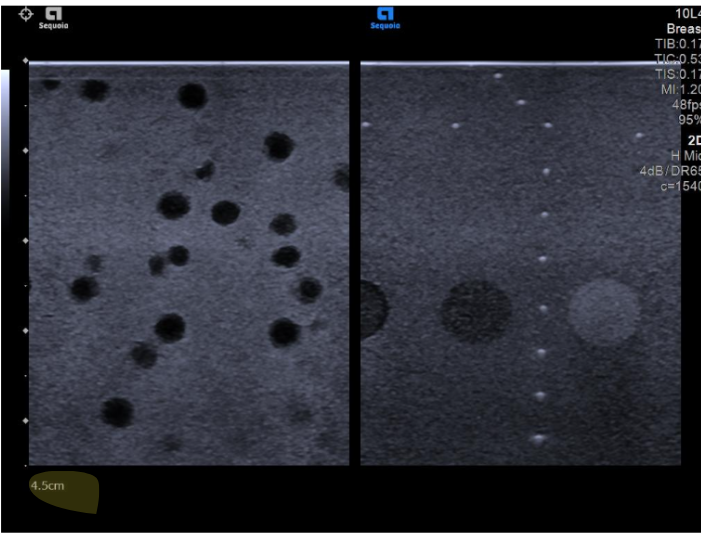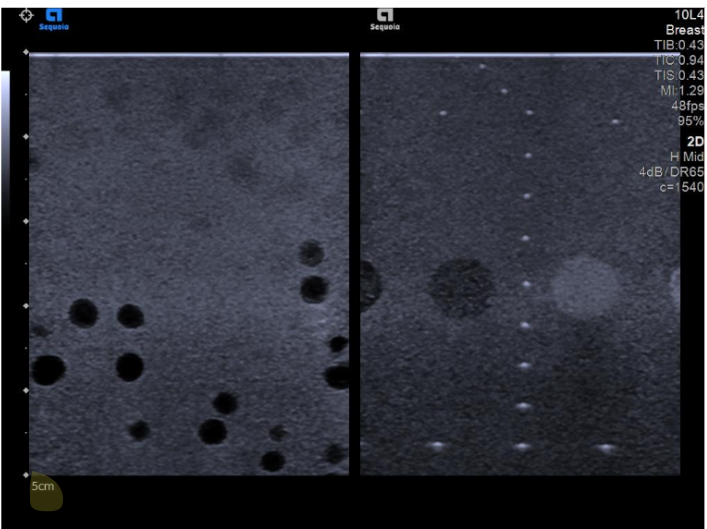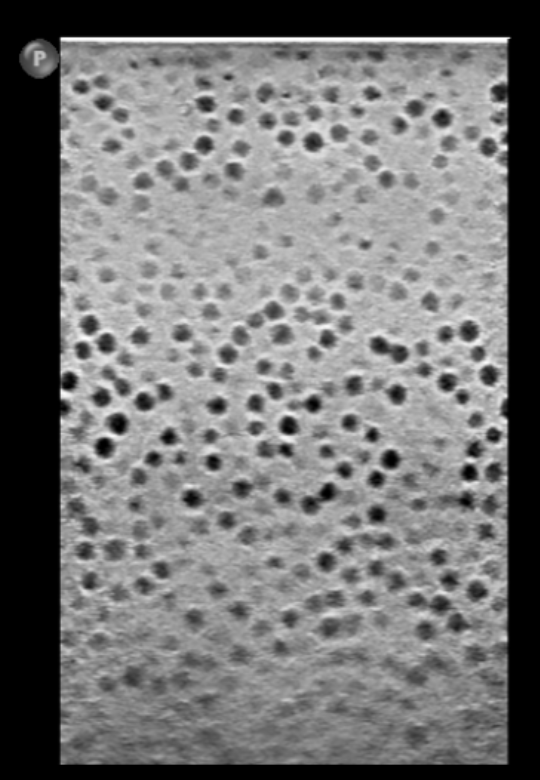Is your ultrasound giving a false sense of accuracy?
Even when your QA protocol confirms proper calibration, default OEM presets can still produce false positives or negatives—putting patients at risk and leading to unnecessary repeat scans.
In the example below, a simple 5 mm change in Field of View (from 4.5 cm to 5.0 cm) keeps the strings visible but blurs the spherical targets entirely. Because most QA tests only measure string visibility, such an image would still “pass” calibration—despite missing critical diagnostic detail.
Utune’s Optimizer corrects this blind spot by including both linear and spherical target detection, ensuring true image integrity across all presets and machines.
Risks of undetected dead zones

Can you spot the difference?
These two images were captured on the
same machine, with the
same transducer, by the
same technician.
The only change: one uses a
Focal Zone of 2.5–7 cm, the other
0–5 cm.
That small adjustment creates a dead zone where key structures become unclear—an error that could lead to a missed or incorrect diagnosis.
Utune’s Optimizer identifies and corrects these blind spots before a scan ever reaches the patient.
Clinical Case
How reliable is your current calibration protocol?
A physician reviewed two ultrasound scans from the same patient—captured with identical machines, transducers, and presets by the same technician.
The first scan appeared indeterminate. The second, from another machine, showed a suspicious lesion and led to a biopsy recommendation.
When engineers investigated, they found the second machine’s calibration board had drifted, producing a false positive that could have led to an unnecessary, invasive procedure.
Utune’s Optimizer would have detected this calibration error before patient imaging began—protecting both diagnostic integrity and patient safety.


